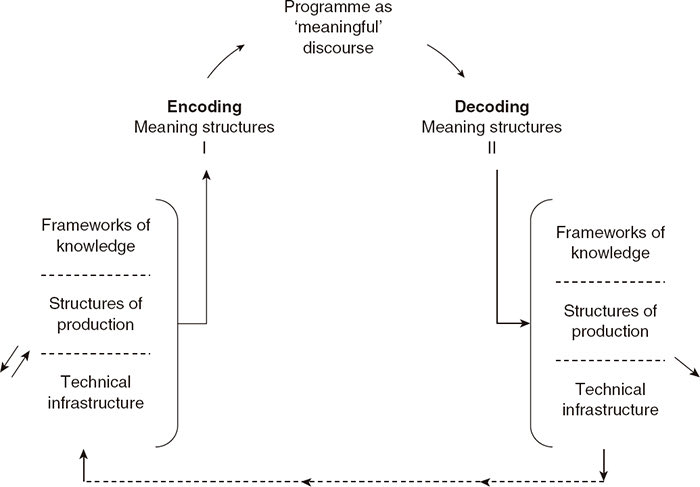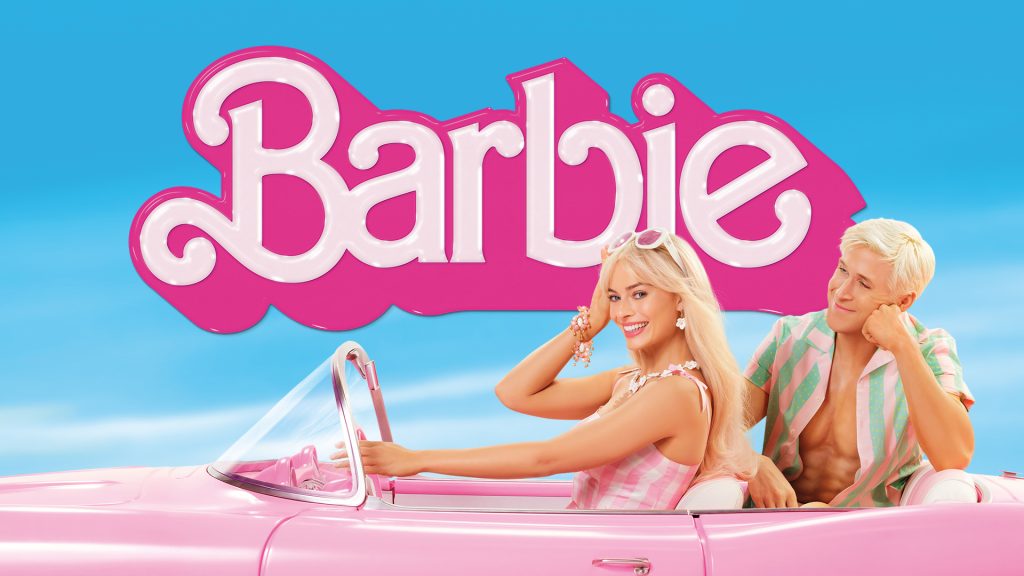Encoding and decoding is a communication theory proposed by cultural studies scholar Stuart Hall, used to analyze the processes of meaning production and reception in media communication. This theory suggests that information in communication is not simply “sent” and “received,” but goes through two important stages: “encoding” (producing meaning) and “decoding” (receiving meaning).
Encoding refers to the process by which the information transmitter transforms the message, intention, or point of view into codes that follow specific rules. Decoding refers to the process by which the information receiver interprets these codes according to certain rules.

Hall argues that when people decode television information, they may adopt one of three positions: the dominant position, the negotiated position, and the oppositional position. We can delve deeper into this theory through last year’s globally popular movie Barbie.

For encoding
Creator’s intention: Director Greta Gerwig and the screenwriters, in making Barbie, intended to explore profound social issues such as gender inequality and the search for personal identity, while using humor and entertainment to satirize consumer culture. The film follows Barbie’s character as she transitions from the “perfect world” to real society, reflecting on the complexity of gender roles and emphasizing individual value and diversity.
For decoding
- Dominant position: Some viewers fully embrace the film’s feminist themes, seeing it as a critique of the gender stereotypes in modern society, and view the movie as an empowering piece for women.
In a five-star review, the Independent’s Clarisse Loughrey said:, external “Barbie is one of the most inventive, immaculately crafted and surprising mainstream films in recent memory – a testament to what can be achieved within even the deepest bowels of capitalism.
- Negotiated position: Some viewers may acknowledge the film’s eff orts in addressing gender issues, but feel that it struggles to balance humor with narrative tension, and even question whether its commercial intent undermines the depth of artistic expression.
Peter Bradshaw from The Guardian also gave the film a lukewarm review, rating it three stars. He described Barbie as
The Guardian’s Peter Bradshaw also gave, external a lukewarm review, awarding the film three stars.
He suggested Barbie is “a good-natured but self-conscious movie” that is “occasionally very funny, but sometimes also somehow demure and inhibited, as if the urge to be funny can only be mean and satirical”.
He added: “This movie is perhaps a giant two-hour commercial for a product, although no more so than The Lego Movie, yet Barbie doesn’t go for the comedy jugular anywhere near as gleefully as that.”
- Oppositional position: Some viewers interpret the film as “anti-male” or “over-ideologized,” arguing that its treatment of gender issues overlooks the struggles men face in society.
The Daily Mail’s Sarah Vine was less keen, external on the representation of men. She wrote: “It’s a deeply anti-man movie, an extension of all that TikTok feminism that paints any form of masculinity – other than the most anodyne – as toxic and predatory…”
She concluded: “It’s uneven, disjointed, the plot makes no real sense – and the dead hand of corporate America weighs heavily upon it.”
Through Hall’s Encoding-Decoding theory, we can see that Barbie is not only a tool for the creators (the encoding team) to express their ideology, but also the starting point for a diverse decoding process by the audience. Barbie is not just a movie; it is a mirror of social ideologies, showcasing the vision for gender equality while also exposing the divisions and contradictions among audiences on this issue. This shows that the meaning of the conveyed message is not fixed, but is a multi-dimensional, interactive process dependent on culture and experience. This example reminds us that when consuming any media content, we must be cautious of a single interpretation.
Reference:
Wikipedia contributors (2024) ‘Encoding/decoding model of communication’, Wikipedia, 17 November. Available at: https://en.wikipedia.org/wiki/Encoding/decoding_model_of_communication#Dominant/hegemonic_position (Accessed: 17 November 2024).
Loughrey, C. (2023) ‘Barbie review: A wildly creative and surprisingly profound film’, The Independent, 19 July. Available at: https://www.independent.co.uk/arts-entertainment/films/reviews/barbie-film-movie-review-b2380412.html (Accessed: 17 November 2024).
Bradshaw, P. (2023) ‘Barbie review: Greta Gerwig’s delirious bubblegum fantasy’, The Guardian, 19 July. Available at: https://www.theguardian.com/film/2023/jul/19/barbie-review-greta-gerwig-delirious-bubblegum-fantasy (Accessed: 17 November 2024).
Vine, S. (2023) ‘Mother and daughter’s verdict on Barbie – “Man-hating film or bigot’s loser? My daughter totally loved it”’, Daily Mail, 18 July. Available at: https://www.dailymail.co.uk/tvshowbiz/article-12312807/SARAH-VINE-mother-daughters-verdict-Barbie-man-film-bigot-loser-daughter-totally-loved-it.html (Accessed: 17 November 2024).


This blog provides a very clear and thoughtful application of Stuart Hall’s “Encoding/Decoding” theory, using Barbie as an example to explain how media messages are created and interpreted. The structure is easy to follow, and the analysis of the three decoding positions—dominant, negotiated, and oppositional—is well explained. I especially liked how the blog uses real reviews from sources like The Independent and The Guardian to support its arguments, making the theory feel more connected to real-life examples. The way the blog explores Barbie’s social messages is interesting. It shows how the creators encoded themes about gender equality, identity, and consumer culture into the movie. At the same time, it explains how different audiences interpret these messages in various ways. For example, while some people see the movie as empowering and progressive, others feel it is too commercial or even biased. This reflects Hall’s idea that the meaning of media is shaped not just by the creators but also by the viewers’ experiences and perspectives.
One suggestion I have is to briefly mention how cultural differences might influence interpretations of Barbie. For example, do audiences in non-Western countries see the film differently? I think including this could make the analysis even more interesting. I hope my small suggestion will help you. 💕
I really love how you’ve used Hall’s encoding and decoding theory to break down Barbie’s social messages!:) You’ve captured how different viewers can interpret the film in such a thoughtful way. I think it would be even more impactful if you could link a few specific moments in the film to each decoding position, this might help make your points even clearer. But overall, it’s a great work!
Wow! The first time I saw the topic of Barbie doll, I became very interested in your article. Your analysis of the movie Barbie through the theory of coding and programming has made me understand the deeper information behind the movie. I really like the structure of your article, which is in theoretical order! Because I am not familiar with this theory, each paragraph and the combination of theory and reality makes it easy for me to understand this content.
Your article makes me deeply feel that movies are not only entertainment but can actually generate much deep thinking. Because I had never noticed the details of the movie before, you inspired me a lot. The coding part can be further expanded, such as the impact of the audience’s background, emotion and social identity, and of course, it may also be the reason for the number of words. Anyway, I really enjoyed this article!
This article provides a systematic explanation of Stuart Hall’s encoding and decoding theory applied to the Barbie movie, showcasing how the film conveys profound social issues through encoding and how audiences demonstrate diverse perspectives and viewpoints in the decoding process. I appreciate that it highlights the complexity and plurality of media information interpretation, and also adds multi-perspective support to the article. This not only deepens our understanding of the Barbie movie, but also serves as a warning against the singular interpretation of media consumption. However, I feel that the article still lacks depth in content exploration, and could further analyze the combination of theory and specific content in the conclusion. Additionally, more theoretical background could be extended to provide readers with a clearer understanding of the article’s content.